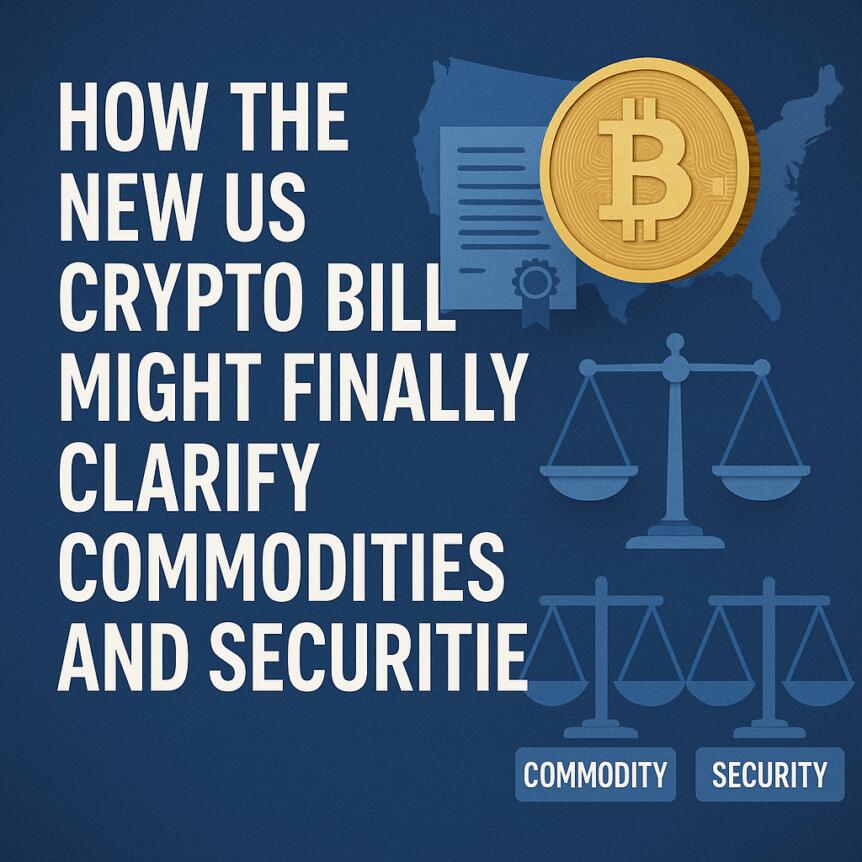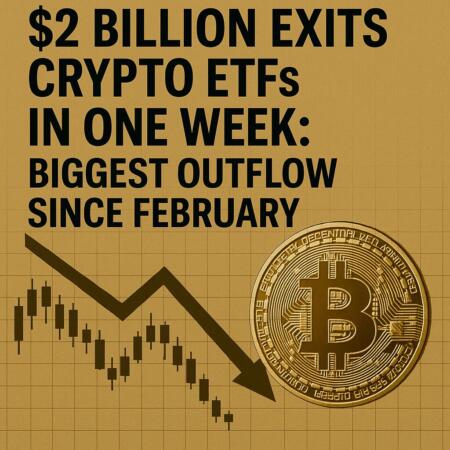The U.S. cryptocurrency industry stands on the cusp of a significant regulatory shift as a bipartisan Senate bill proposes a clearer framework for classifying digital assets. Aimed at resolving the long-standing security versus commodity debate, the legislation seeks to create a more predictable environment for crypto firms, institutional investors, and traders, potentially transforming how digital assets are regulated and traded in the United States.
- The Senate’s bipartisan bill attempts to define digital assets more clearly as commodities or securities, aiming to streamline crypto regulation.
- Proposes the creation of a new digital commodity category, placing Bitcoin, Ether, and similar tokens under the jurisdiction of the CFTC.
- Shifts regulatory power from the SEC to the CFTC, expanding oversight over digital commodities and trading platforms.
- Includes stricter operational standards for crypto firms, emphasizing consumer protection and risk management.
- Major implications for token issuers, exchanges, institutional investors, and retail traders are expected as the industry adapts to clearer rules.
Senate bill targets crypto’s regulatory paradox: Security vs. commodity
Ever since cryptocurrencies emerged, one of the key regulatory challenges has been distinguishing between digital assets that are securities and those classified as commodities.
This ambiguity has hampered industry growth, delayed institutional adoption, and led to legal uncertainties. Now, a new draft bill from the Senate Agriculture Committee, led by Chair John Boozman and Senator Cory Booker, aims to address this issue by proposing a more comprehensive regulatory framework.
The legislation is part of broader efforts to unify the regulation of digital asset markets, clarifying how the U.S. would categorize tokens and delineate oversight responsibilities. This move significantly advances the ongoing debate over whether cryptocurrency assets are commodities or securities.
Crypto companies, trading platforms, and investors in the U.S. have long faced uncertainty over registration and compliance requirements. The new bill seeks to reduce this confusion by establishing clear classifications and responsibilities for regulators.
It also strives to create a streamlined regulatory environment that encourages innovation while maintaining investor protections.
What is a digital commodity?
The draft bill introduces a pivotal concept: the digital commodity. Under this framework, tokens like Bitcoin (BTC) and Ether (ETH) would be classified as digital commodities.
A digital commodity is an interchangeable token that individuals can fully own and transfer without intermediaries. These assets are recorded on publicly accessible, cryptographically secured blockchains. The bill proposes that such assets fall under the jurisdiction of the Commodity Futures Trading Commission (CFTC), rather than the SEC.
The potential reclassification offers several benefits:
Clarified rules for major investors: Institutional and retail investors could hold digital commodities without fear of regulatory violations.
Reduced regulatory uncertainty: Companies would no longer worry about the SEC declaring their tokens as securities unexpectedly.
Market differentiation: Digital commodities labeled as “safe” might see increased trading volume, derivatives activity, and institutional participation. Meanwhile, tokens not qualifying would remain under SEC oversight.
Did you know? Back in 2014, the U.S. classified Bitcoin as property for tax purposes, making every trade a potential capital gains event. This early regulatory stance helped shape global crypto regulation standards.
Categorization of coins and a shift in regulatory power
The proposed bill clarifies what constitutes a commodity but leaves open the definition of securities, especially for DeFi projects, governance tokens, and hybrid assets. These classifications will be determined at a later stage.
Tokens not aligned with the “digital commodity” category could fall under SEC scrutiny, especially if they exhibit characteristics typical of securities.
The bill outlines three key regulatory paths:
Clear rules for digital commodities like Bitcoin and Ether
Stricter oversight for utility, governance, and tokenized assets, similar to securities regulations
Robust requirements for new token offerings, including disclosures and compliance checks
Token design — including decentralization, purpose, and sale method — will determine the applicable regulatory pathway. This results in a nuanced approach aligning regulation with token attributes.
A major proposed change involves shifting oversight authority. Historically, the SEC has held primary jurisdiction over crypto. The new draft suggests expanding the CFTC’s role, empowering it to oversee:
The primary trading market for digital commodities
Registration and supervision of exchanges, brokers, and custodians handling these assets
Shared rulemaking authority with the SEC in some cases, along with new fee collection powers for funding oversight activities
This represents a notable shift, moving away from the SEC’s enforcement-heavy approach to a more structured and predictable regulatory framework, potentially reducing sudden legal challenges for blockchain companies.
Stricter operational standards for crypto firms
The bill also introduces operational and risk-management standards for crypto firms, aiming to improve market integrity and protect investors.
Segregating funds and avoiding conflicts of interest: Crypto exchanges would be barred from combining functions such as trading, custody, brokerage, and market-making within a single entity. Instead, these roles would need to be separated, akin to traditional financial institutions.
Listing only trustworthy assets: Exchanges could list only tokens that meet specific integrity standards, reducing the availability of manipulated or unreliable assets on U.S. platforms.
Enhanced consumer protections: The proposal emphasizes safeguarding customer assets, mandating full disclosures, maintaining transparent audit records, and instituting strict reporting and compliance requirements.
These measures aim to mitigate fraud, prevent project collapses, and reduce exchange insolvencies, fostering a safer environment for crypto investors and traders.
Did you know? The European Union’s recent adoption of the Markets in Crypto-Assets (MiCA) regulation in 2023 marked the first comprehensive set of crypto rules worldwide, prompting many firms to consider relocating to Europe for regulatory clarity.
Implications for different crypto stakeholders
The bill’s passage could reshape the landscape for various players in the crypto ecosystem, from industry giants to everyday traders, by establishing clearer rules and oversight mechanisms.
For token issuers
Projects will need to evaluate whether their tokens qualify as digital commodities. More decentralized networks with fewer intermediaries are more likely to fall into this category. Tokens not meeting these criteria would remain under SEC jurisdiction and face stricter regulation.
For exchanges and brokers
Operators would need to adapt to new compliance standards. Although these changes might increase operational costs, they could boost institutional confidence and contribute to a more mature, resilient crypto market infrastructure.
For institutional investors
Large asset managers and fiduciaries have long cited ambiguous regulations as a barrier. With clearly defined classifications and a shift of oversight authority, they may be more inclined to incorporate crypto assets into mainstream portfolios.
For retail traders
Retail users are expected to benefit from higher operational standards, enhanced protections, and reduced exposure to scams. However, stricter asset listing criteria could lead to a narrower selection of available tokens for trading.



